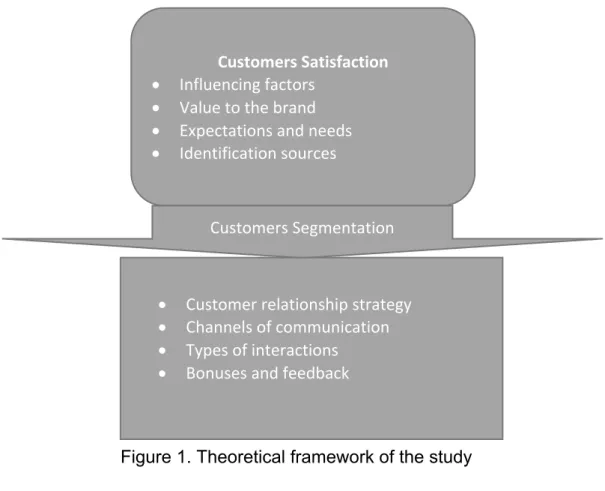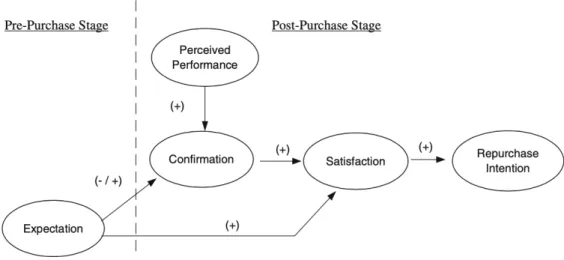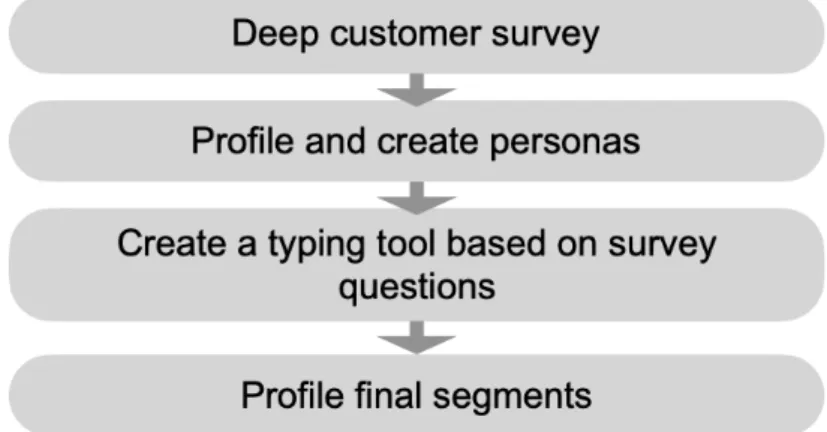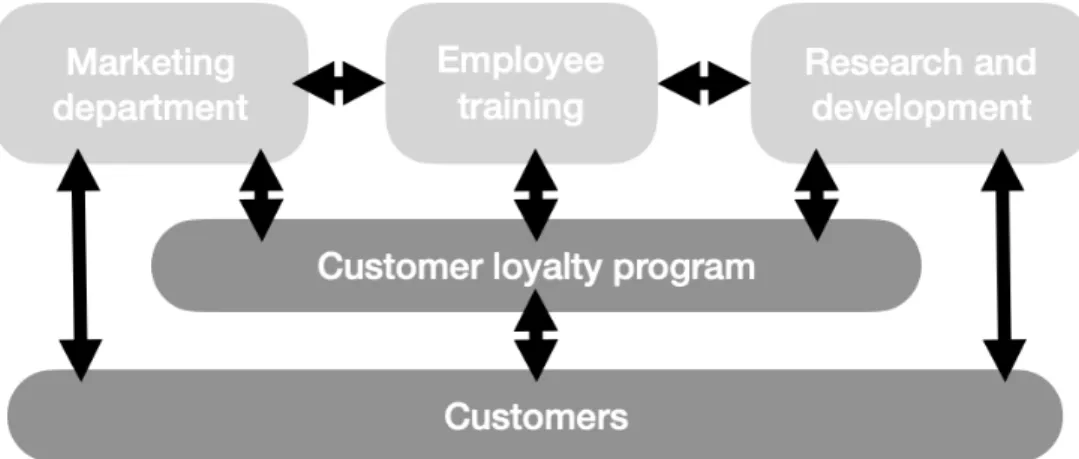The combination of theoretical work and the results of customer research became the basis for the concept of a customer loyalty program. The limitations and objectives of the study are given to focus on the main objective of designing a loyalty program for the case company.
Background of the study
In the introductory chapter, the background of the study is given along with the theoretical framework, research questions and thesis plan. The purpose of this study is to determine what creates loyalty for those customers who provide a certain level of loyalty to the case company and make the loyalty program based on improving relationships with loyalists.
Introduction of the case company
To achieve that goal, we look at the expectations and needs of the loyal customers. The company has an interest in researching its most loyal customers from the total number of thousands of names and phone numbers of the entire file.
Objectives and delimitations
Demarcations in the empirical part are made in the choice of the target group and the type of research method. The age issue was excluded from the preferences due to the lack of the information in the customer profiles in the company's customer database.
Research questions
As a result of the company statistics, the main audience of the salons are women aged 20 to 50, who buy a mixed service of haircut and hair color at once. The format of face-to-face interviews was chosen to create trust and confidence between the author of the research and the interviewees.
Theoretical framework
Separating customers into groups helps achieve efficiency in providing services to end customers (Kotler & Armstrong 2017). The theoretical part of the study represents the knowledge base for the implementation of customer loyalty.
Research methods
Customer expectations and needs are key concepts for successful customer relationship management (Peppers & Rogers 2017). The target group for the interviews was chosen within the limitations of the research.
Structure of the study
Identification – the process of recognizing the ultimate buyers of the company's products or services. Customization - the process of personalizing the company's products or services according to customer needs and expectations.
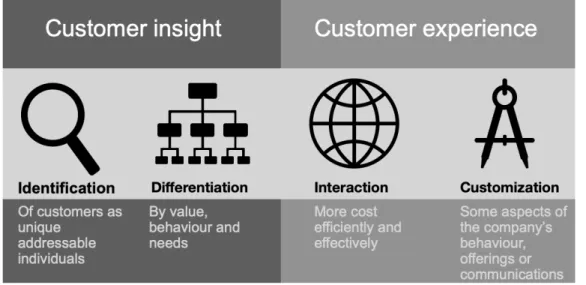
Customer experience
The main idea of mass customization is to develop modules of a product or service which can be customized according to the specific group of customers.
Customer satisfaction
Some researches (Güngör 2007) use the main dimensions of the customer satisfaction concept: price, product quality and service quality. Customer survey is one of the important steps to check the satisfaction of individual customer base.
Customer expectations
Successful companies must be aware of the changes in customer attitudes towards the brand's products and services. The purpose of a loyalty program is to increase the level of customer satisfaction and thus the level of retention, create a long-term relationship with customers and improve the positive image of the brand.
Sustainable customer loyalty
It happens because the customer likes the brand and wants to show both the loyalty and the positive emotions of maintaining the products of the beloved brand. One of the first points for a brand is to research the current loyalty level of its customers' target audience. The company's product or service must be able to meet the expectations of the customer.
Elements of the customer loyalty program concept (Butscher 2002) This framework was chosen by the author of this thesis as a comprehensive tool for implementing the concept of a customer loyalty program.
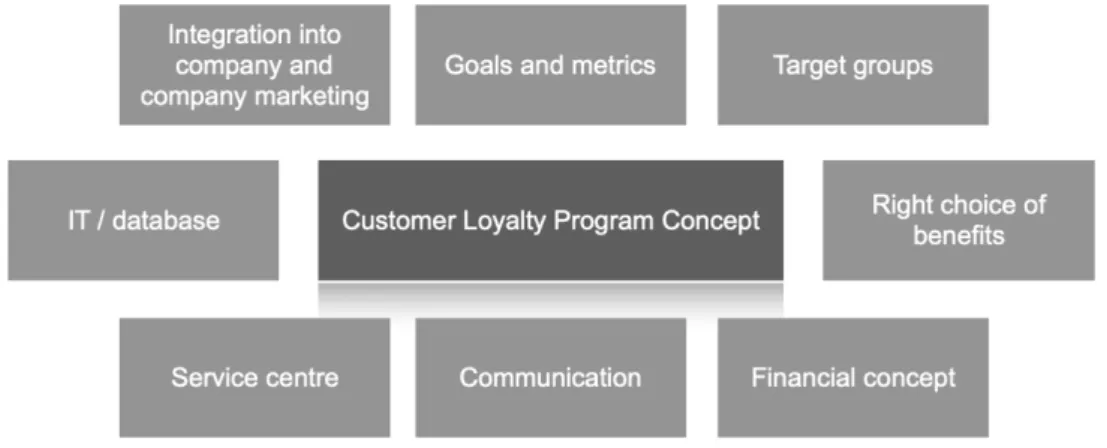
Goals of a customer loyalty program
To improve brand image through the positive effect of customer loyalty program activities. To increase the frequency of repurchases through special promotional activities and events that bring the brand into the minds of customers. Support the company's public relations through media channels and reports on customer loyalty program activities.
All of the primary and secondary objectives help to achieve the core objectives of a customer loyalty program - to increase revenue, profit and market share of a company.
Metrics of success for customer loyalty program
Customer lifetime value
Customer lifetime value (CLV) is a measure of the overall value of the customer to a company over the entire time period of the brand-customer relationship. CLV guides a company in evaluating the amount of investment it is willing to commit to customers. It is important for companies to make predictions of customer value at the time the customer starts buying the company's products or services and at each point of repurchase.
CLV can be used to differentiate customers based on the level of profitability of that company (Kumar & Pansari 2016).
Target groups of a customer loyalty program
Gross contribution margin – the number calculated by subtracting the cost of goods sold from the revenue customers accumulate with each purchase. Marketing costs – the costs of marketing activities that a company undertakes to enhance relationships with current customers. According to this approach, customers are differentiated and rewarded with so-called stars, which illustrate the customer's financial contribution.
It can be more effective if the managers of the company start with the customer's point of view about the segmentation process.
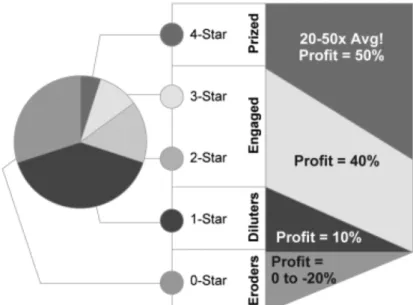
Right choice of benefits in a customer loyalty program
Value – to differentiate the values of each customer segment. the company's price proposition and opt out of the special loyalty program. Consumers look at the revenue and results of participating in a particular customer loyalty program and make their decision based on their findings. Revenue includes the overall actions a customer must take to be part of the loyalty program.
The outcomes are the benefits a customer could get – the hard and the soft.
Financial concept
Understanding customer expectations and preferences is fundamental to the introduction of soft benefits. In the service industry, the costs of quality that can meet customer expectations are not so transparent. Another approach could be a specific brand currency (or bonuses) that the customer can then use to pay for the brand's products or services.
Multi-Product Pricing – The customer gets the product at a deep discount, but agrees to purchase additional products at full price.
Communication in a customer loyalty program
Customer insights can be important for improving service and product quality. The external communication touches on two spheres: communication with the program participants and the external environment. Communication with existing customers participating in the loyalty program should be organized around customer preferences (Peppers & Rogers 2017).
The choice will depend on the company's structure and the strategic goals for frim.
IT/database of a customer loyalty program
Big data analytics - the specific database and the software provided for it must be able to work with large amounts of data. The software of the database must be quickly and easily linked to (analytical) tools. Different parties of the company must have access to add information about the customers to the database.
However, the deletion of the information as part of the data maintenance must be held by the managers of the loyalty program.
Integration into company and company marketing
It should be easy for a customer to make the first purchase – the way they contact the company, the delivery system, the selection process. Special gifts and promotions implemented during the initial purchase process can increase a customer's positive emotions. The customer should be easily recognized by the company's representatives after the fourth touch.
One of the main marketing tools in the modern world are customer relationship management programs, or CRM programs.
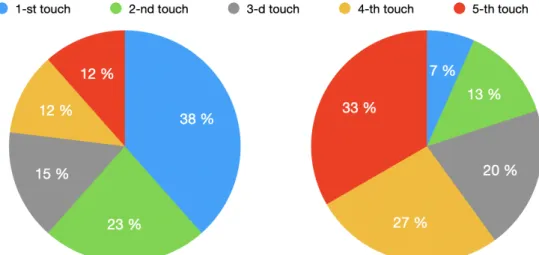
The research method
The second is to run an additional business that will work on the loyalty program for the brand. However, loyalty program managers must have the power to make quick decisions and implement customer benefits and changes to the loyalty program independently of other company departments. In interviews, the communication process is usually dyadic, the roles of the interviewer and the interviewee are clearly defined.
The choice of the type of interview depends on the structure of the questions, the number of participants, the process of administering the interviews and whether the research question is answered in the interview process.
The questions formation
They allow for deeper research than would be possible with a quantitative research approach. Different types of questions were used to aid the inquiry process and avoid blank answers or yes or no answers. The full text of the questions and answers is provided in appendices 1 and 2 at the end of the report.
The target group
Conducting the interviews
The results of the research
Behavioral data
This insight relates to time-based pricing in a customer relationship management strategy. Responses to the possibility of price changes varied among the interviewees. This insight is strongly related to the previous paragraph - the amount of the discount should not be too high.
Only two of the respondents said they would be happy if the price dropped by 50%.
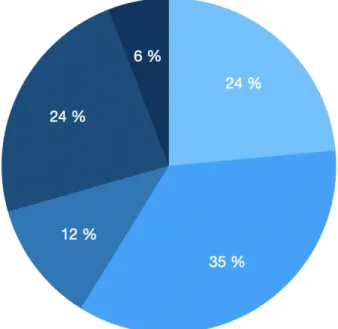
Brand relationship
As we see in the diagram, the customers of the case company are paying interest for information about fashion, trends and hair care services. To make customers aware that they can claim about the salon experience, whether positive or negative, and get something in advance to improve their impression. Create a fashion-oriented information stream on WhatsApp or Telegram and invite the most reliable customers to participate in the channel.
The adjustment can be based on the frequency of the purchases or on the desired list of services.
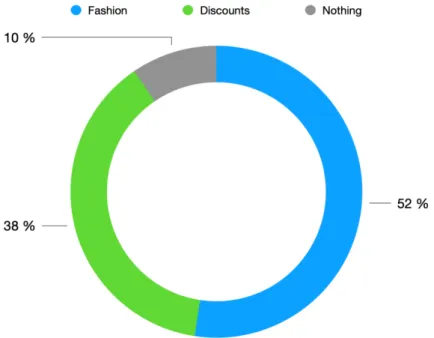
Improvements
This type of training should be considered an important part of the customer loyalty program. The purpose of this study was to create the concept of the customer loyalty program for the case company. The third step was to analyze the results of interviews with loyal customers.
The final step was the creation of the customer loyalty program for the case company.
